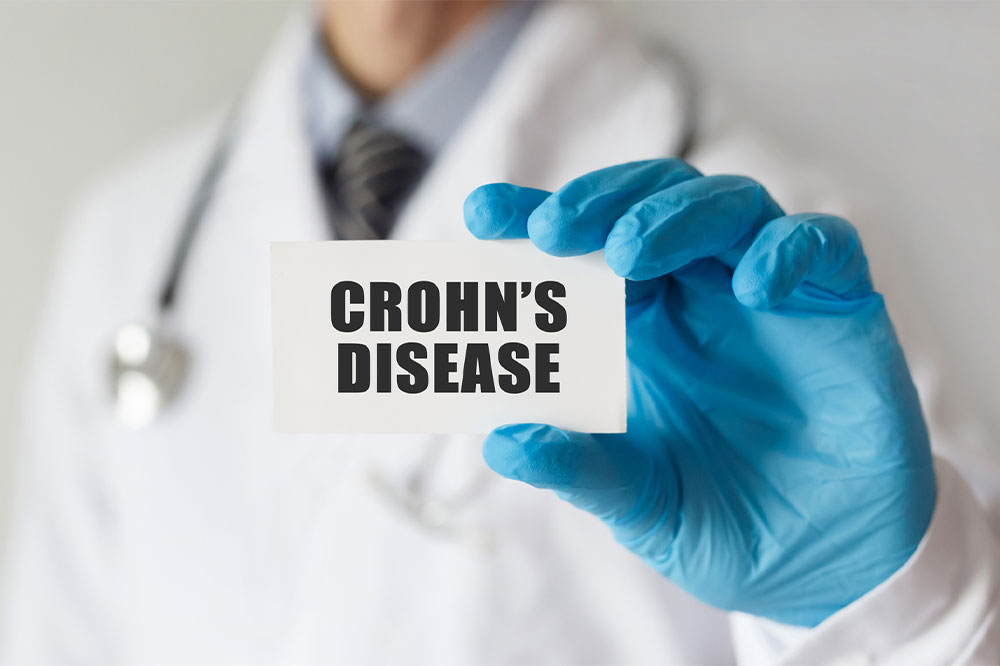
Essential things to know about the types of Crohn’s disease
Named after Dr. Burrill B. Crohn, Crohn’s disease is a long-lasting inflammatory condition of the gastrointestinal or digestive tract. The disease belongs to a group of conditions commonly referred to as IBD or inflammatory bowel diseases. Crohn’s disease can affect different parts of the gastrointestinal tract. Based on this, it’s classified into five types. Symptoms of the disease can vary. The type of Crohn’s largely determines the symptoms. Read on to know more.
Ileocolitis
This is the most common Crohn’s disease. In this type of Crohn’s disease, there is inflammation and irritation in the last section of the small intestine, known as the terminal ileum, and the large intestine also called the colon. People with Ileocolitis may experience symptoms such as significant weight loss, diarrhea, cramping, and pain in the middle or lower right part of the abdomen.
Ileitis
Ileitis is similar to Ileocolitis, except that it only affects the ileum. The symptoms are the same as Ileocolitis; however, those with ileitis may also develop fistulas or inflammatory abscesses in the lower right section of the abdomen.
Gastroduodenal Crohn’s Disease
This form of Crohn’s disease affects the stomach and the initial part of the small intestine called the duodenum. Common symptoms of Gastroduodenal Crohn’s Disease include nausea, lack of appetite, and weight loss. Sometimes, small parts of the bowel get blocked due to intestinal inflammation causing vomiting.
Jejunoileitis
The upper half of the small intestine is called Jejunum. When Crohn’s disease causes patches of inflammation in the Jejunum, it’s known as Jejunoileitis. Symptoms of this type of Crohn’s disease include diarrhea and mild to intense abdominal pain, and cramps after meals. In severe cases or after a lengthy period of inflammation, fistulas may form in the Jejunum.
Crohn’s (Granulomatous) Colitis
This type causes inflammation and irritation in the main part of the large intestine, called the colon. People with Crohn’s colitis or Granulomatous colitis may develop fistulas, ulcers, and abscesses near the anus. Other symptoms include skin lesions, joint pain, diarrhea, and rectal bleeding. Note that skin lesions and joint pain are common symptoms of this type.
Diagnosis
The symptoms of different types of Crohn’s disease are similar to many other health conditions, so diagnosing can be tricky. A healthcare professional performs a thorough physical exam, checks medical history, and conducts multiple tests and other procedures before confirming the diagnosis of Crohn’s disease.
Physical exam
Physical exam usually involves assessing the individual’s overall health, including the heart rate, blood pressure, and weight. Doctors may inquire about or look for signs and symptoms of Crohn’s disease, such as abdominal swelling or bloating and abnormal sounds within the gastrointestinal tract.
Laboratory tests
After physical examination, the individual may be asked to go through a few laboratory tests and procedures. These can help doctors determine whether the individual has Crohn’s disease and the type. Tests and procedures may include a blood test, stool sample, computed tomography (CT) scan or Magnetic resonance imaging (MRI) scan of the abdomen, colonoscopy to check the inside of the colon, and endoscopy and enteroscopy to check the upper gastrointestinal tract.
Treatment
There’s no cure for Crohn’s disease. The treatment options available can help manage the symptoms and reduce the risk of complications from the disease. It’s crucial to know that some patients don’t experience symptoms all the time. They go through periods during which their symptoms aggravate, followed by periods of no symptoms, also called remission. There are several treatment options for managing the disease. Some common options include surgery and lifestyle changes.
Surgery
Approximately 60% of the people diagnosed with Crohn’s disease will need surgery. Surgery is primarily for those who develop fistulas, abscesses, intestinal obstruction, and hemorrhages as complications from Crohn’s disease. Typically, the goal of surgery is to remove the diseased segment of the bowel and then join the two ends of healthy bowels together. Note that surgery isn’t a cure, but it may help an individual live a symptom-free life for a long time.
Lifestyle changes
Making lifestyle changes is a key aspect of the long-term management of Crohn’s disease. They can help reduce the severity of symptoms during flare-ups, prevent flare-ups in the future, and even reduce the risk of lasting damage to the gastrointestinal tract. These changes include avoiding high-fiber foods such as nuts and vegetable skins and foods that may upset the digestive system, such as milk and carbonated drinks. It’s also important to eat smaller meals multiple times a day rather than eating two full meals. People with Crohn’s disease may also benefit from drinking plenty of water, reducing psychological stress, maintaining healthy body weight, and exercising regularly.




